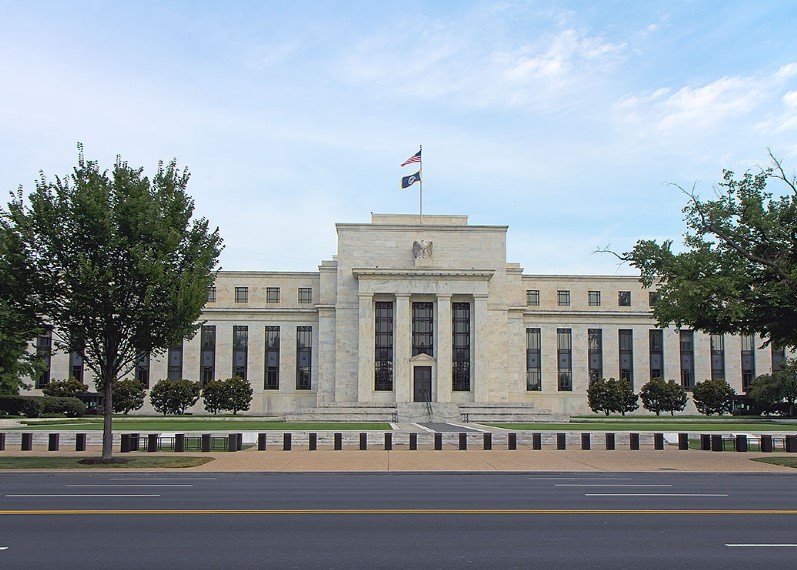Financial giants inch closer to softer regulations as watchdogs prepare rollback of crisis-era safeguards
U.S. banking regulators are putting the finishing touches on a plan that could ease some of the strictest financial rules born from the 2008 crash. The move—still in the proposal stage—would shrink capital buffers big banks must hold, a major pivot from the post-crisis doctrine of “too big to fail.”
The Federal Reserve, Office of the Comptroller of the Currency (OCC), and the Federal Deposit Insurance Corporation (FDIC) are behind the proposal. According to sources cited by Politico, it could go public in the coming months. One thing is clear: Washington’s regulatory mood has shifted, and big banks are once again calling the shots.
Big banks reclaim leverage in Washington
Just a year ago, major financial institutions were fighting tooth and nail against higher capital demands. Now? The tide has turned.
Scott Bessent, Treasury Secretary under the new administration, has made it plain: easing capital requirements is a “top priority.” A major push is expected over the summer, signaling that bank lobbies have found friendlier ground.
Analysts like Ed Mills from Raymond James aren’t surprised. “The 2024 election ushered in the largest turnover among federal financial regulators in the history of our country,” he said. “And that’s starting to bear fruit.” Banks, Mills added, are “back in the driver’s seat.”
A quick pivot, indeed, from the Biden-era push to toughen safeguards.

What’s changing, and why it matters
At the heart of the proposed rollback is the level of capital that banks must set aside to absorb potential losses. These “capital cushions” were a central pillar of the Dodd-Frank Act, enacted after the 2008 meltdown.
Here’s why it matters:
-
Capital rules determine how much risk banks can take.
-
Less capital means more room to lend, invest, and grow profits.
-
But it also means banks are more exposed in a downturn.
One sentence says it all: more risk, more reward—and more vulnerability.
Critics argue reducing these buffers makes the system fragile. Proponents say the existing rules are too restrictive and outdated. The banks, of course, see opportunity.
Politics and power: Who’s behind the push
The financial sector’s influence on Washington is nothing new, but the post-2024 reshuffle has supercharged it.
Unlike the Obama or Biden years, the current administration views deregulation not as a hazard, but as an engine of growth. Bessent, formerly a hedge fund executive, has close ties to Wall Street. His regulatory agenda mirrors industry priorities almost line for line.
Some of the current players:
-
Federal Reserve: Jerome Powell’s legacy may now tilt more pro-bank.
-
OCC and FDIC: With new leadership appointed after the election, both agencies are more aligned with easing rules than tightening them.
-
Industry Lobbies: From the American Bankers Association to private equity-funded think tanks, pressure has ramped up.
This isn’t just technocratic tinkering. It’s political muscle at work.
Meanwhile, banks want others watched more closely
While the big banks cheer for looser rules, they’re also pointing fingers—at nonbank financial institutions (NBFIs).
These include private equity firms, hedge funds, and fintech outfits. They’ve ballooned in size, often doing things traditional banks do but without the same oversight. The industry’s message? “If we’re being watched, they should be too.”
The Fed’s New York branch flagged the trend last month. It warned that relationships between banks and nonbanks can mimic banking activity: private credit firms lending to corporations, money market funds offering near-instant access to deposits—these walk and talk like banks, even if they aren’t officially labeled as such.
For traditional banks, this is both a competitive threat and a regulatory frustration.
How the month of June may shape the rules ahead
The coming weeks could prove pivotal. Regulators are expected to unveil key parts of the proposal this summer. If approved, the changes may take effect in phases, possibly starting early 2026.
There’s still room for pushback, particularly from consumer groups, watchdogs, and even some centrist lawmakers worried about systemic risk. But for now, the momentum favors the banks.
Not everyone’s convinced this is a good idea
Despite the cheerleading from Wall Street, not everyone sees this as progress.
Dennis Kelleher, CEO of Better Markets, a nonprofit promoting financial reform, called the rollback plans “a return to the same mindset that gave us the 2008 crisis.” He warns the short-term profits banks are chasing now could come at a steep price later.
Others echo that sentiment. “We’ve spent the last 15 years building a safer system,” said a former Fed economist who asked not to be named. “Undoing that work because the banks are bored with it? That’s dangerous.”
One paragraph. One concern. One potential crisis waiting in the wings.
Markets respond with cautious optimism
Wall Street seems to like what it’s hearing—but with one eye on the details.
Shares of major U.S. banks—JPMorgan Chase, Citigroup, and Bank of America—ticked up after the Politico report. Investors see fatter margins and fewer regulatory headwinds ahead.
Still, there’s some hesitation. If the public or political backlash grows, the proposal could face delays or revisions. The financial world knows better than most: nothing is final until the ink dries.








